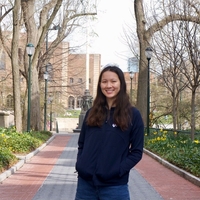Macroevolutionary Analysis of Queen-Worker Size Dimorphism in Ants
The tempo and mode of the evolution of queen-worker size dimorphism in ants gives insight into the evolutionary patterns and mechanisms that have led to the reproductive division of labor that characterizes eusocial species. We measured the head and body sizes of queen and worker specimens from 749 ant species and performed a preliminary analysis. Phylogenetic comparative methods (PCMs) showed that these traits are not independent when considering the underlying phylogeny. Furthermore, all queen and worker traits are positively correlated across the phylogeny. Preliminary results suggest that, on average, queen head and body size have increased across the phylogeny while worker head and body size have decreased. Phylogenetic analysis also indicates that large queen-worker dimorphism in head width and mesosoma length independently evolved multiple times throughout the phylogeny, as well as extreme trait values in head length and mesosoma width. Lastly, rate correlation analysis was used to estimate the relative evolutionary rates of queen and worker head width and mesosoma width. In both cases, queen traits evolve more quickly than worker traits, supporting the hypothesis that worker traits experience indirect adaptive selection through the direct selection of queen traits.

Comments